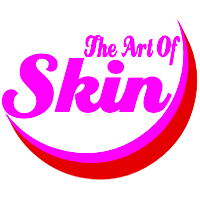Sebaceous hyperplasia is usually benign and does not necessitate any medical intervention, although many individuals seek treatment for aesthetic purposes. Home remedies, like using over-the-counter creams and topical ointments, are generally ineffective. Our team of dermatology experts provides effective solutions for sebaceous hyperplasia to promote a clear and healthy complexion. A dermatologist from our practice may suggest one of the following therapies to address this condition.
Clinical Skin Care
To maintain healthy skin and address sebaceous hyperplasia, it is crucial to use dermatologist-approved skin care products tailored to your specific skin type. These products may contain ingredients like retinol or salicylic acid to prevent clogging of oil glands and hyaluronic acid for natural hydration. Additionally, it is important for individuals with this condition to use daily sun protection with an SPF of at least 35. Sunscreen not only helps prevent sebaceous hyperplasia but also protects against photodamage, precancerous skin conditions, and skin cancer.
Facial Peels
A clinical facial peel with salicylic acid, a beta hydroxy acid (BHA), can be effective in preventing sebum buildup in oil glands. However, individuals with sensitive skin should be cautious as chemical peels may cause irritation, redness, and sensitivity. Proper aftercare is essential to avoid aggravating sebaceous hyperplasia. It is important to follow the post-peel recommendations provided by your skin care professional for optimal results.
Laser Therapy
Laser therapy may be recommended by your dermatology professional to remove sebaceous hyperplasia bumps. This treatment involves using a laser to gently smooth the top layer of skin and eliminate trapped sebum in the glands. Laser therapy can be beneficial, especially for individuals with sensitive skin or those who are not suitable candidates for other treatment options. Also known as laser resurfacing, this non-invasive treatment may be suitable for various skin types. Contact us to learn more about the available treatments!
Electrocautery
Electrocautery, also known as thermal cautery, utilizes an electrical needle to burn off lesions. Among dermatologists, it is the most commonly used treatment for sebaceous hyperplasia. This method is fast, painless, effective, and carries minimal risks. After the procedure, the skin forms scabs that eventually fall off, revealing a smooth area. However, there is a small chance of skin pigmentation changes in rare cases, which is why it is crucial to seek treatment from licensed skin professionals.
Surgery
In cases where sebaceous hyperplasia is severe or persistent, dermatology surgery may be recommended by healthcare professionals. This surgical procedure removes the bumps and prevents their return. However, the decision to undergo surgery depends on various factors unique to each patient, and less invasive options may be preferred for treating sebaceous hyperplasia. To determine if surgical treatment is necessary for your condition, please reach out to Gainesville Dermatology & Skin Surgery.
Antiandrogen Medications
Although the exact cause of sebaceous hyperplasia remains unknown, medical experts suspect a connection between this condition and elevated levels of naturally produced testosterone. For female patients experiencing severe symptoms associated with sebaceous hyperplasia, some doctors may suggest antiandrogen medications. These medications may also be recommended for patients who do not respond well to other treatment methods or are unable to receive alternative treatments.
